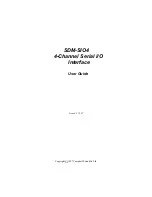
Official GSK Agents in South Africa
Tel: +27 11 626 2720, [email protected]
Chapter Seven Miscellaneous Function
127
V
o
lume
III Function
7.2 S Code Miscellaneous Function
Brief
When the S code is performed, the I/O point or analog value control can be set by the bit 2 of
the bit parameter No: 1
The basis processing of the spindle S code I/O point control:
Table 7-2-1
Signal output
Response
signal
Function
Program
address
F address signal
Strobe signal
End signal
S code
miscellaneous
function
S* S*
(
F22
)
TF
(F007
#
2
)
SRESP
(G63#1)
FIN(G00#0)
SFIN(G00#4)
S code miscellaneous function explanations are shown below:
(1) It is supposed that SX is specified in the program:
The range of the X is 1~8, the system may alarm if it exceeds its range. S1~S8
separately corresponds to the F address signal F22#0~#7. (For example, S1
corresponds to the F address signal F22#0).
(2) If the non M, S and T codes, such as the movement and dwell, are specified with the
miscellaneous function at the same time, the
miscellaneous
function is then simultaneously
performed.
(3) When the S1 is performed, the F address signal F22#1 and the strobe signal F007#2 are
set to 1, simultaneously, ensuring the PLC sets the response signal RESP(G063#1) to 0.
(4) PLC is set the end signal SFIN (G00#4) and FIN (G00#0) to 1 when the operation is
performed. If these code miscellaneous functions, namely, M, S and T, are performed
simultaneously, the end signal FIN (G00#0) can be set to 1 till all of these functions are
executed.
(5) When the S1 is completed, ensuring the PLC is set the response signal SRESP (G63#1) to
1.
(6) M, S and T codes may be performed simultaneously in a block. The CNC can be performed
next block after affirming the end signal FIN is set to 1.
The basic processing of the spindle S code analog value:
Table 7-2-1














































